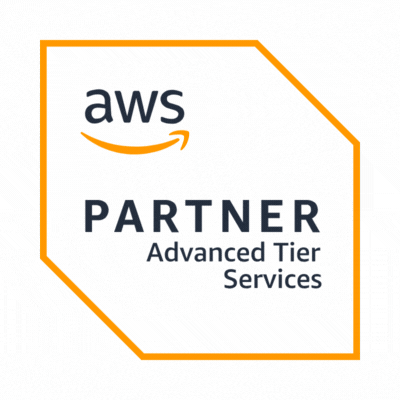In today’s digital-first world, cloud adoption has become a cornerstone of business strategy. As companies migrate to the cloud, the potential for agility, scalability, and innovation increases significantly. However, as cloud environments grow, so does the complexity of managing cloud costs. This is where cloud financial management (CFM) plays a pivotal role.
Cloud financial management is a practice that enables businesses to manage, optimize, and align cloud spending with their business objectives. This blog will explore the key principles of cloud financial management, its importance for modern businesses, and effective strategies for success. We will also interlink relevant resources and best practices to help you navigate the evolving landscape of cloud financial management.
Introduction
Cloud financial management involves the processes and tools used to manage, optimize, and control cloud expenditures. According to Gartner, global spending on public cloud services is expected to reach $591.8 billion in 2023, emphasizing the growing importance of managing these investments efficiently.
As organizations increasingly adopt cloud services, understanding and implementing robust financial management practices becomes crucial.

What is Cloud Financial Management?
Cloud financial management refers to the set of strategies, tools, and best practices that businesses use to control and optimize their cloud spending. It is about gaining visibility into cloud costs, ensuring that expenditures align with business goals, and continuously optimizing resource allocation to avoid unnecessary costs.
In essence, cloud financial management is about balancing cloud innovation with financial discipline, ensuring that cloud investments deliver maximum value while maintaining cost efficiency.
Cloud financial management is closely linked to cloud cost optimization strategies, as managing costs in the cloud goes hand-in-hand with efficient resource usage and streamlined cloud operations. If you're looking for best practices in cloud cost optimization, start by focusing on monitoring and forecasting cloud expenses effectively.
Key Components of Cloud Financial Management
Cloud financial management is a holistic approach that integrates several key components, ensuring businesses manage their cloud investments effectively:
1. Cost Visibility and Transparency
Effective cloud financial management starts with gaining complete visibility into cloud usage and costs. Organizations must have the ability to track, monitor, and analyze their cloud spend in real-time. This helps in identifying cost drivers, understanding usage patterns, and optimizing resources.
AWS offers tools like Cost Explorer to help track spending trends, while third-party solutions provide advanced analytics and AI-driven insights. For businesses operating across multiple cloud platforms, multi-cloud cost optimization strategies can provide a comprehensive view of costs across different providers.
2. Budgeting and Forecasting
Budgeting in the cloud is different from traditional IT environments due to its pay-as-you-go nature. Cloud financial management involves setting clear budgets and forecasting future cloud spending based on historical data and growth projections.
Tools such as AWS Budgets and Cost Management solutions allow organizations to establish spending thresholds and receive alerts when costs exceed predefined limits. Cloud cost management tools are essential in helping businesses stay within their financial boundaries and predict upcoming expenses.
3. Cost Allocation and Chargeback
To manage cloud costs effectively, it’s crucial to allocate costs to the right teams, departments, or projects. Cost allocation allows for accountability and transparency in cloud usage, ensuring that each department is responsible for its own cloud consumption.
Organizations can implement chargeback models where costs are directly assigned to the team consuming the cloud resources, or showback models where usage is reported without direct billing. Accurate cost allocation helps in understanding how resources are used and promotes a cost-conscious culture within the organization.
4. Optimizing Cloud Resources
One of the fundamental principles of cloud financial management is resource optimization. This involves continuously reviewing cloud infrastructure, identifying underutilized or idle resources, and making adjustments to right-size them. For example, scaling down over-provisioned resources or leveraging AWS reserved instances and spot instances for predictable workloads can significantly reduce costs.
We help organizations implement cloud optimization strategies that align cloud resources with business needs, ensuring cost efficiency without sacrificing performance.
Why is Cloud Financial Management Important?
As businesses increasingly adopt cloud-based infrastructures, the complexity of managing cloud costs grows. Without proper financial management, cloud spending can spiral out of control, leading to inefficiencies and budget overruns. Cloud financial management ensures that organizations have the tools and processes in place to optimize their cloud environment continuously.

1. Avoid Unnecessary Cloud Spend
Without visibility and control over cloud expenses, businesses can end up paying for unused or underutilized resources. This results in unnecessary cloud spend, eroding the value derived from cloud adoption.
By implementing cloud cost management and optimization strategies, organizations can avoid wasteful spending, ensure resources are utilized efficiently, and maximize their cloud investments.
2. Align Cloud Costs with Business Goals
Cloud financial management ensures that cloud expenditures are aligned with business objectives. Whether it’s supporting innovation, enhancing customer experiences, or improving operational efficiencies, CFM allows businesses to focus their resources on what matters most.
Cloud financial management also helps businesses prioritize where and how they invest in cloud technologies. Cloud consulting services can offer strategic insights into how cloud costs can be aligned with your organization's goals.
3. Drive Cost Efficiency and Scalability
In a cloud environment, scalability is one of the key advantages. However, scalability can also drive up costs if not managed properly. Cloud financial management provides the mechanisms to scale efficiently, ensuring that businesses can grow while keeping cloud costs under control.
For companies looking to modernize their cloud infrastructure, cloud modernization is a crucial step toward achieving cost-effective scalability.
How to Implement Effective Cloud Financial Management
Implementing cloud financial management requires a combination of tools, processes, and strategies designed to foster financial accountability across the organization.
1. Leverage Cloud Financial Management Tools
Cloud providers like AWS, Azure, and Google Cloud offer a suite of tools designed to manage and monitor cloud spending. For example, AWS Trusted Advisor offers real-time guidance on best practices for cost optimization. Organizations can also explore third-party tools that offer more advanced analytics and automation capabilities.
2. Adopt a Cost-Conscious Culture
Effective cloud financial management requires fostering a culture of cost awareness throughout the organization. This can be done by educating teams on cloud costs and integrating financial accountability into cloud governance practices.
3. Continuous Cost Optimization
Cloud financial management is not a one-time exercise but an ongoing process. Regular audits, performance monitoring, and fine-tuning of cloud resources are critical to ensuring that costs remain optimized over time.
Benefits of Cloud Financial Management
Cloud Financial Management (CFM) offers businesses the ability to maximize the value of their cloud investments by ensuring cost efficiency, transparency, and alignment with business objectives. By implementing effective CFM strategies, organizations can gain real-time visibility into their cloud spending, optimize resource usage, and drive financial accountability across teams. This proactive approach not only reduces unnecessary costs but also enables businesses to scale sustainably while maintaining agility and performance in the cloud. Let's explore the key benefits of adopting cloud financial management practices.

1. Enhanced Cost Control
Effective cloud financial management practices enable organizations to control and reduce their cloud spending, ensuring that costs remain within budgetary constraints. Implementing budgeting, cost allocation, and optimization strategies helps maintain financial discipline. For example a company reduces costs by rightsizing instances and utilizing reserved instances.
2. Improved Financial Visibility
Cloud financial management tools provide detailed insights into cloud spending, allowing businesses to understand their cost drivers and make informed decisions. Regular reporting and monitoring enhance visibility into cloud expenditures. For instance, using AWS Cost Explorer to identify and address cost spikes.
3. Increased ROI
By optimizing cloud usage and costs, businesses can maximize the return on their cloud investments, ensuring that resources are used efficiently and effectively. Cost optimization strategies lead to significant savings and better resource utilization. Leveraging AWS Trusted Advisor recommendations to reduce waste and improve performance.
Strategies for Effective Cloud Cost Management
Implementing effective cloud cost optimization best practices is crucial for optimizing cloud expenses. These strategies include:
- Rightsizing Resources: Regularly review and adjust the size of cloud resources to match actual usage needs.
- Auto-scaling: Implement auto-scaling policies to adjust resource capacity based on demand.
- Utilizing Spot Instances: Take advantage of spot instances for non-critical workloads to reduce costs.
- Regular Audits: Conduct regular audits to identify and eliminate unused or underutilized resources.
Best Practices for Implementing Cloud Financial Management Software
Adopting cloud financial management software can streamline the process of managing cloud costs. Best practices include:
- Integration with Existing Systems: Ensure the software integrates seamlessly with existing financial and operational systems.
- User Training: Provide comprehensive training to users for effective utilization of the software.
- Customization: Customize the software to align with organizational policies and financial goals.
- Continuous Monitoring: Regularly monitor and update the software to keep up with changing business needs.
Maximizing Savings with AWS Reserved Instances
AWS Reserved Instances (RIs) offer significant cost savings for predictable workloads. Strategies to maximize savings include:
- Long-term Commitment: Commit to 1-year or 3-year terms to avail of higher discounts.
- Convertible RIs: Use Convertible RIs for flexibility to change instance types or families.
- Coverage Analysis: Regularly analyze RI coverage to ensure optimal usage and avoid over-provisioning.
- Regional Optimization: Purchase RIs in regions where you have consistent and predictable workloads.
Cloud Financial Management for SMBs
Small and medium-sized businesses (SMBs) face unique challenges in cloud operations management, such as limited resources and expertise. Solutions include:
- Adopting Scalable Tools: Use scalable cloud financial management tools that grow with the business.
- Cost-effective Strategies: Implement cost-effective strategies like spot instances and auto-scaling.
- Outsourcing: Consider outsourcing cloud financial management to experts.
- Regular Training: Provide ongoing training to staff on cloud cost management practices.
Optimizing Multi-Cloud Financial Management
Managing costs across multiple cloud providers can be complex. Strategies for optimizing multi-cloud financial management include:
- Unified Cost Management Tools: Use tools that provide a unified view of costs across multiple cloud environments.
- Standardized Tagging: Implement standardized tagging across all cloud providers for consistent cost tracking.
- Cross-Provider Discounts: Take advantage of cross-provider discounts and negotiated rates.
- Centralized Governance: Establish centralized governance policies to manage multi-cloud costs effectively.
Read more about multi cloud-cost optimization to understand more about multi cloud financial management.
Financial Governance in the Cloud
Financial governance ensures that cloud spending aligns with organizational policies and objectives. Key practices include:
- Policy Enforcement: Implement policies for cloud usage, cost allocation, and budgeting.
- Regular Audits: Conduct regular audits to ensure compliance with financial policies.
- Governance Frameworks: Use governance frameworks like AWS Control Tower to manage cloud resources.
- Stakeholder Involvement: Involve key stakeholders in financial decision-making processes.
The Impact of AI and Machine Learning on Cloud Financial Management
AI and machine learning (ML) are transforming cloud financial management by providing advanced analytics and automation. Benefits include:
- Predictive Analytics: Use AI to predict future cloud costs and usage patterns.
- Anomaly Detection: Implement ML algorithms to detect cost anomalies and potential security threats.
- Automated Optimization: Leverage AI for automated resource optimization and cost-saving recommendations.
- Intelligent Reporting: Generate intelligent reports with actionable insights using AI and ML.
Managing Cloud Financial Risks With A Proactive Approach
Proactively managing cloud financial risks involves identifying potential risks and implementing strategies to mitigate them. Key practices include:
- Risk Assessment: Regularly assess risks related to cloud spending and resource utilization.
- Mitigation Strategies: Develop and implement strategies to mitigate identified risks.
- Continuous Monitoring: Continuously monitor cloud environments for potential risks.
- Incident Response: Establish incident response plans for financial anomalies and breaches.
The Role of FinOps in Cloud Financial Management
FinOps (Financial Operations) is an emerging practice that brings together finance, operations, and engineering teams to manage cloud costs effectively. Key aspects include:
- Collaborative Approach: Foster collaboration between finance, operations, and engineering teams.
- Cost Transparency: Ensure transparency in cloud spending and cost allocation.
- Performance Metrics: Use performance metrics to measure and optimize cloud financial management.
- Continuous Improvement: Implement continuous improvement processes for cloud cost management.
The Takeaway
Cloud financial management is a critical practice for any organization utilizing cloud services. By implementing robust financial management strategies and leveraging tools like AWS Budgets, Cost Explorer, and Trusted Advisor, businesses can achieve greater control over their cloud spending, improve financial visibility, and maximize their return on investment.
Ready to take control of your cloud finances? Get in touch with our experts for a free cloud consultation to learn how we can help you implement effective cloud financial management practices and optimize your AWS environment for cost efficiency and performance.




















